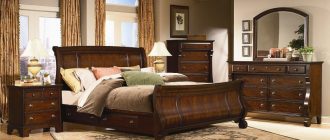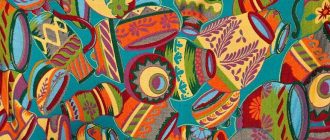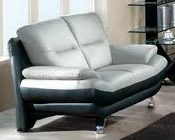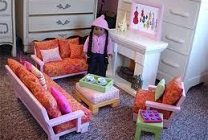Danish furniture of the Late Gothic and Renaissance periods displays the Teutonic origin of its peoples. Important woodworking industries in Flensburg and other principal towns were responsible for the production of many elaborate cabinet pieces. Choice of decorative elements in these times, and throughout the Baroque period in Denmark, might coincide with French or English tastes, though completed forms generally indicate closer relationships with Holland and North Germany.
Furniture centers which developed during the eighteenth century were located in Copenhagen, Altona, Lubeck, Flensburg and Kiel. Copenhagen was then the most populous . city in Scandinavia. Altona, a far smaller town but still the third largest in population, was a trading center with many manufactures. Lubeck, located in the county of Wagria in Holstein, was actually an imperial city in the Diets of Lower Saxony, but is considered here as properly within the Danish sphere of interest. Flensburg and Kiel were smaller towns, the former nevertheless considered the most important in the duchy of Schleswig, the latter subject to both German and Danish alliances.
Altona is particularly associated with the production of seat furniture approximating Georgian styles, and of mirrors in more typically native designs. In addition to such productions, Lubeck was also famous for its cabinetwork.
During the middle decades of the eighteenth, century Copenhagen craftsmen executed the most elaborate of Danish commodes and cabinets, richly shaped and veneered in walnut, with extravagant carving and gilded details. These were at times more embellished productions than those appearing in the Hamburg area. Their enrichment produced rather bizarre effects, even in comparison with the most striking of German pieces. Occasionally, gilded metal appliques were substituted for the more usual carved and gilded relief ornament.
The same flamboyance is typical of many other Danish designs, which are easily recognized through acquaintance with these cabinet-pieces. Related techniques were applied to the carving of seat furniture, center and side tables, and mirror frames, not only in the main Danish island but in Schleswig Holstein.
French designs, brought from Paris by Danish craftsmen, exerted some influence. However, Danish furniture designs of the Rococo period were more greatly affected by German developments. Approximations of the Louis XV style appear in chairs, canapes, occasional tables, dressing tables, consoles and commodes. Room panelings also reflect this styling. Asymmetrical ornament frequently recalls the work of Francois Cuvillies and other German architect-designers.
In Copenhagen, a city in which the foremost craftsmen congregated, productions usually displayed some native features of design throughout the Rococo and Classic periods. Danish furniture deriving from the French styles is therefore distinctive because of such renditions. Provincial designs might parallel those of similar French environs.
A decided English influence appeared during the middle decades of the eighteenth century. This is apparent in “Early Georgian” designs of chair backs, although these were often combined with typically Danish treatments of cabriole legs and seat rails. Elements of design which were adopted in Ireland are also discernible in Danish seat furniture of this time.
So much furniture was imported from England, France and Germany that an appeal on behalf of the Danish chair-makers resulted in a ban, from 1746 to 1768, on bringing in seat furniture from these countries.
In Copenhagen, “The Royal Furniture Magazine” (warehouse) was created by the Danish government in 1777 to supply furniture designs in the “modern taste,” provide supplies of the choicest seasoned woods, and furnish advances on pieces to be made and sold under the seal and guarantee of the establishment. George Roentgen, brother of the more famous David, and also called an “English cabinetmaker,” was connected with the magazine from 1779 to 1781.
English impetus was maintained under the later direction of Carsten Anker, a Norwegian, who was a sponsor of Simon Brotterup. The latter had studied organization and production in London for six years. He is credited with introducing English woodworking tools which had previously been unknown in Denmark. Jens Brotterup also studied in London, and later produced English types of chairs and cabinetwork in Copenhagen. The Copenhagen cabinetmakers were acquainted with The London Cabinet-Makers’ Book of Prices, as shown by the work of Jochum Pengel.
Danish chair-makers followed English designs more closely than did the cabinetmakers. Chippendale models and later Georgian developments were accurately rendered in outlines, carved details and moldings. Generally, however, liberties were taken to accommodate local tastes, although legs and feet were often rendered in more typical English fashion than in North Germany and Sweden. A feature of some cabinetmakers, working in either English or French styles, appears in the use of similarly blocked or turned feet on all four legs of a chair, a method followed by Jens Brotterup in particular.
English-style card or tea tables were commonly used, also pembroke and sofa tables, and smaller forms for occasional use. Drop leaves were sometimes supported by fly brackets, with shaped or diagonally cut ends, but more often by plain bar lopers.
Oak and pine were both favored for carcase work in Denmark. Exposed surfaces appeared in oak, elm, walnut, birch, fruitwoods and other native timbers. With the late adoption of mahogany, coinciding with French and German importations, the exotic woods usually combined with mahogany, in veneered work, were also employed.
Many examples of Danish furniture were exported to Norway during the eighteenth century. These included the usual requirements in seat furniture, cabinet pieces and wall mirrors. Classic designs in mirror frames were of oval and oblong shapes, in which features associated with Louis XVI, Adam or Hepplewhite developments were often present. They might incorporate ribbon or laurel festoons, or filigree work supporting tiny amors.
Some particular consideration must be accorded the furniture produced in outlying districts of Denmark, in Schleswig Holstein and the neighboring islands. Schleswig was entirely subject to Denmark after 1720. Holstein was periodically subject to Danish control. In 1784 the Baltic Sea and the North or German Ocean were joined by the canal which forms a division between the two duchies. This aided American and British shipping by eliminating passages through the Skagerrack and Cattegat. Northward along the coast of Schleswig, from the town of Husum to above that of Tondern, lay the islands of Sylt, Amrom, Nordstrand, and other smaller isles, all prosperous in local activities concerned with the sea.
The populations scattered throughout this section represented a large portion of the Danish kingdom, living in modest but comfortable circumstances. Their furniture followed the styles of the large native cities or those of the countries with which they traded. Principal living rooms were paneled in oak or pine. Bedrooms were often similarly treated and furnished with richly carved bedsteads and armoires. Seat furniture frequently approximated English styles of the late seventeenth and early eighteenth centuries, while tables were of tripod or gate-leg types, or the usual Dutch and English forms for gaming and more stationary use against walls.
This mode extended to the west coast, which, with its islands, was known as North Friesland. The dialect spoken here was closer to English than any used in adjoining neighborhoods. The topography of the Frisian Isles and even the buildings and activities of the natives have been likened to those of Nantucket. Here paneled walls were often enlivened with alternate surfaces of decorative block tiles. Door lintels, frieze moldings, cabinets and shelves were all utilized to display faience and pewter. Walls were further enhanced with Friesland clocks, quill-work sconces, racks for pipes and books, hand-worked hangings and samplers.
Most important to American interest, these Frisian homes contained windsor chairs and highly decorative wall mirrors indicating early trade relations with this country. Certainly a nine-spindle, hoop-backed windsor chair, with bent armrests supported by additional spindles and two turned balusters, is a New England rather than an English type. Yet this and other scoop-seat windsor models with bowed or low flat-arched horseshoe backs were common here. Wall mirrors in walnut, mahogany or fruit-wood veneers on pine, with gilded relief ornament of garlands, festoon, birds, bow-knots and rosette bosses, were equally popular. Gilded brass knobs, used to support their weight, were decorative conveniences favored in Scandinavia and in America more than in England.
Earlier Danish mirrors of greater importance, with variously arched or scrolled frames, are often considered to be American “Queen Anne” or “Chippendale” examples. The most elaborate frames featured the flamboyant ornamentation associated with Copenhagen designs of the middle eighteenth century.
Another type of Danish mirror had delicate molded framings which enclosed a mirror border and the central beveled plate. On the reverse side of a glass panel in the angularly arched crest, and sometimes on the reverse side of the plate border, there appeared designs painted by artists of widely varying merit. Dates of these examples range from about 1750 into the nineteenth century. This type of mirror has been attributed to English craftsmen of the late seventeenth century. However, a more obtuse classification is that of the Metropolitan Museum of Art, which still insists upon a Chinese origin!





